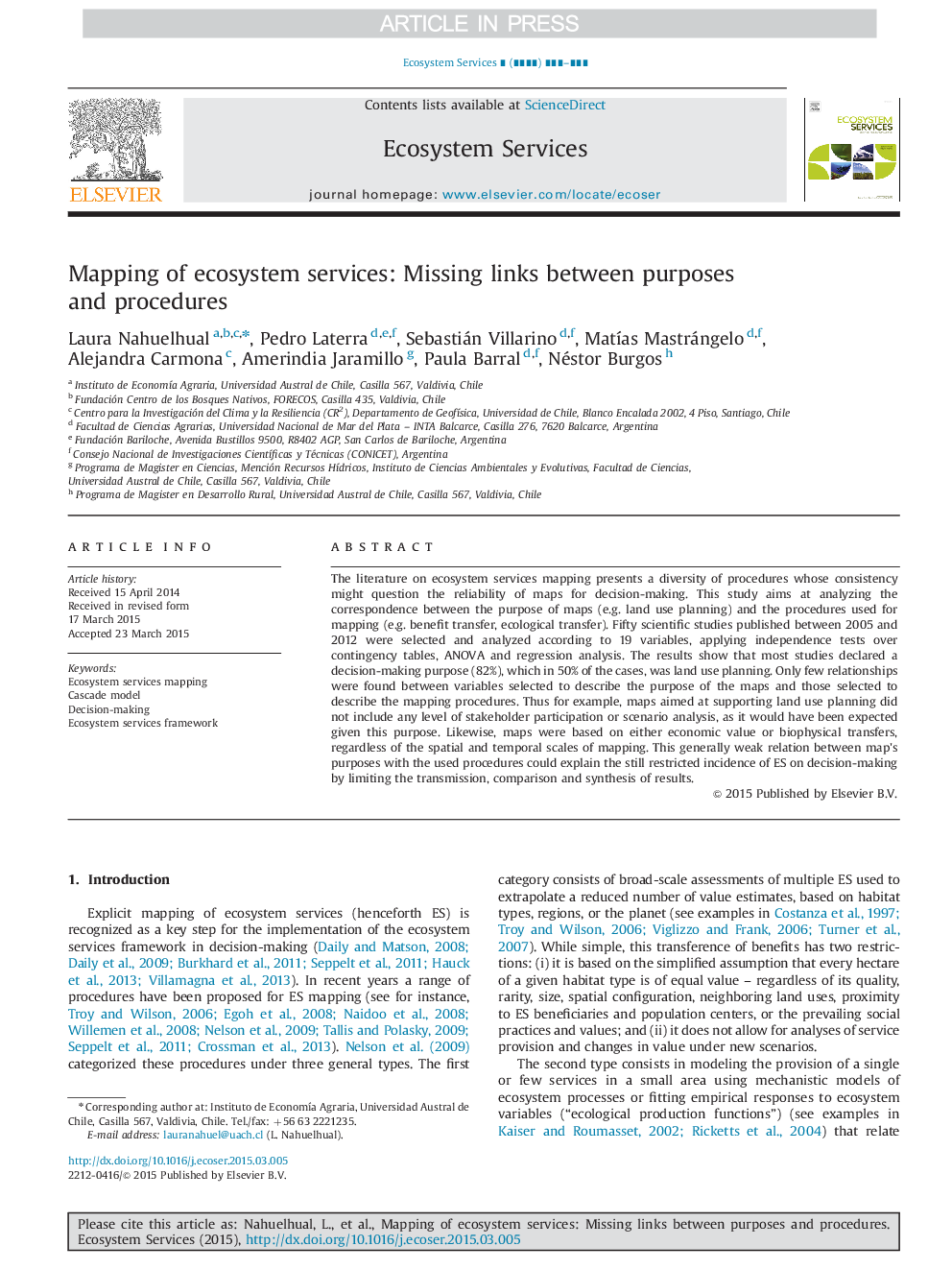| Article ID | Journal | Published Year | Pages | File Type |
|---|---|---|---|---|
| 6556795 | Ecosystem Services | 2015 | 11 Pages |
Abstract
The literature on ecosystem services mapping presents a diversity of procedures whose consistency might question the reliability of maps for decision-making. This study aims at analyzing the correspondence between the purpose of maps (e.g. land use planning) and the procedures used for mapping (e.g. benefit transfer, ecological transfer). Fifty scientific studies published between 2005 and 2012 were selected and analyzed according to 19 variables, applying independence tests over contingency tables, ANOVA and regression analysis. The results show that most studies declared a decision-making purpose (82%), which in 50% of the cases, was land use planning. Only few relationships were found between variables selected to describe the purpose of the maps and those selected to describe the mapping procedures. Thus for example, maps aimed at supporting land use planning did not include any level of stakeholder participation or scenario analysis, as it would have been expected given this purpose. Likewise, maps were based on either economic value or biophysical transfers, regardless of the spatial and temporal scales of mapping. This generally weak relation between map׳s purposes with the used procedures could explain the still restricted incidence of ES on decision-making by limiting the transmission, comparison and synthesis of results.
Related Topics
Life Sciences
Agricultural and Biological Sciences
Agricultural and Biological Sciences (General)
Authors
Laura Nahuelhual, Pedro Laterra, Sebastián Villarino, MatÃas Mastrángelo, Alejandra Carmona, Amerindia Jaramillo, Paula Barral, Néstor Burgos,
